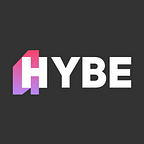In-house is an undeniably growing trend. In this article, we would like to talk about effective tools and problems of in-app advertising.
Over the past two years, daily app usage has grown by 40%. Users worldwide spend about four hours a day on apps, and in some countries, the average is even higher — more than five hours. Today’s consumers rarely part with smartphones, and a mobile environment is a perfect place to interact with them.
App promotion through the ads is inevitable with tremendous app stores growth, and more and more brands realize this. The world leaders in “in-app” ads are, as usual, the walled gardens: Google and Facebook. Despite slow feedback and minimal transparency, most app developers still use them for advertising campaigns. More and more questions arise about the self-attribution of big techs: any of them can attribute the last touch before conversion. Otherwise, how can it be proven that the user came from another channel? Sometimes discrepancies reach up to 50%. Without a doubt, these platforms are effective, but they provide relatively little data for in-depth analytics of advertising campaigns.
In turn, advanced analytics can help advertisers spend advertising budgets more efficiently and eliminate inappropriate or fraudulent traffic. But where to find more data while saving the performance? Programmatic in-house DSPs come to the aid of developers.
Quality and volume of the traffic
A significant advantage of programmatic in-house DSPs is the connection to all available RTB traffic — Google, Applovin, MoPub, Unity, Chartboost, etc., unlike ad networks that have access only to its ecosystem networks. A user acquisition manager has access to the TikTok traffic, ad networks, and all possible SSPs in one interface. There is no need to have accounts and allocate a separate budget for each platform.
All sources can be compared and analyzed in the same place. The UA manager can turn off ineffective creatives and leave only sources with high performance. Thus, in-house DSPs allow users to optimize campaigns in real-time and adaptively increase bids for whales, which bring most of the revenue to the app.
Complex retargeting
According to statistics, apps lose up to 90% of users in the first month after installation, sso one of the main objectives is to retain the audience, especially paying or previously actively involved audience members. Retargeting sometimes turns out to be several times cheaper than acquiring new users.
For effective retargeting, the platform must have the capacity to collect audiences with complex logic. For example, retarget users who had previously purchased for more than $100 but haven’t made in-app purchases in the last two weeks, etc. This will enable developers to retain the most valuable audience, which generates the most revenue, without wasting the budget on an uninterested audience.
Process Automation
In-house DSPs provide the flexibility you need to streamline your campaign setup and creative workflows. For example, Hybe has tools for mass editing campaigns, mass uploading creatives, and customizable dashboards for in-depth analytics. This allows user acquisition managers to change click-through links for dozens of campaigns, bids and targeting in several clicks. As a result, the media buyer gets more time for analytics, and the risk of error when setting up campaigns is minimized.
Real time campaign dynamics
The key indicator of the success of an advertising campaign is always the result, but the raw data is also helpful for analyzing and building future strategies. Using black-box solutions, UA managers do not have enough data on the progress of campaigns and rarely know the effectiveness of specific settings. For example, the creative is good, all the basic settings are done, but you consistently get little traffic on these SSPs. Using the delivery diagnostics tool, the media buyer sees the reasons for losing or not participating in the auction (for example, exceeding the frequency limit at the level of the entire app or choosing narrow targeting), and can quickly change campaign settings to improve results.
Machine Learning tools
In 2022, artificial intelligence is an integral part of any adtech company. In programmatic in-house, ML optimization occurs at each stage of the in-app funnel. For instance, when there are enough events A (e.g., 1000 installs), ML optimization is already available for the probability of this event. Then there are enough events B (e.g., registration), ML can optimize toward event B, etc. The platform should be able to automatically optimize the campaign for all events from the funnel, including ROAS. At Hybe, the connection of the ML models is available after 800–1000 installs. Suppose the advertiser passes unattributed events through MMP integration. In that case, some more ML opportunities are available, for instance, creating lookalike audiences or ML whitelists from the very start of the campaign.
Hidden fees
The most painful questions for app developers are still the real cost of the conversions and the quality of the traffic. Programmatic in-house platforms have an advantage: due to transparent SaaS pricing, the client sees the actual media cost and understands how much he paid for traffic and how much for the platform’s tech fee. In addition, the media buyer sees from what apps users come from and whether they make conversions. Based on these indicators, he can increase purchases from more efficient sources, improving the quality of the attracted audience.
Conclusion
To attract relevant users to your apps, you need to consider many aspects and those considered, but in-house programmatic platforms can help you in that. In-app advertising steadily grows and should offer flexible approaches and solutions. Of course, the main parameters when choosing an advertising partner should be complete transparency and the ability to control campaigns. We can already conclude that the in-housing trend among mobile app developers will only grow, which means that the market will offer more and more solutions for in-app advertising.
